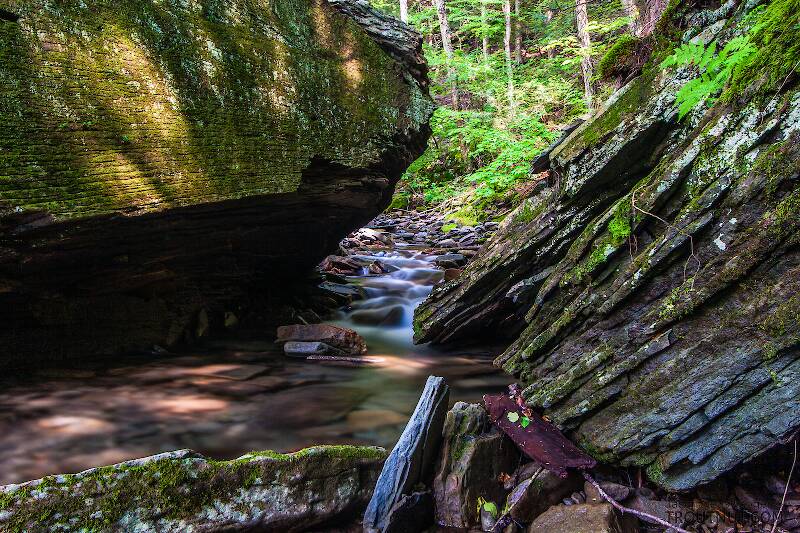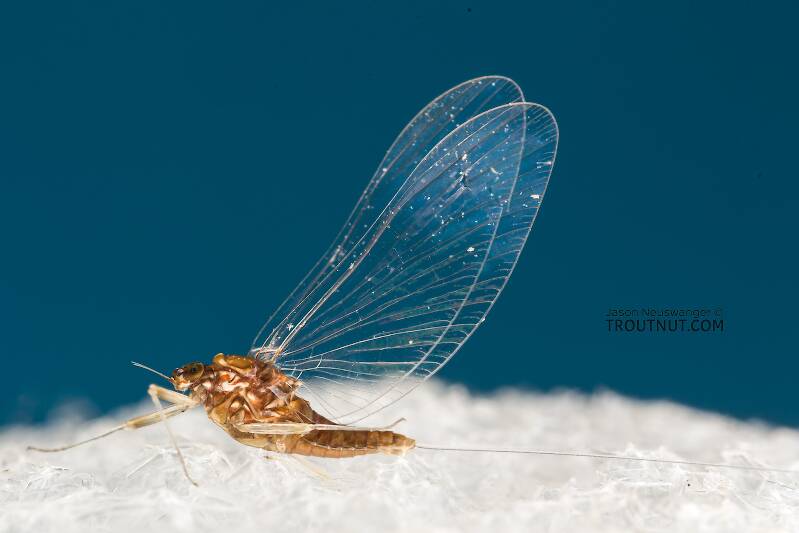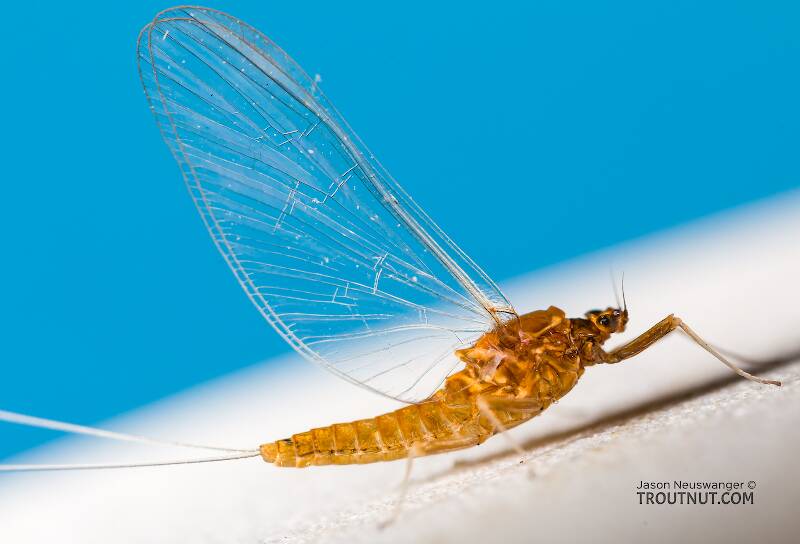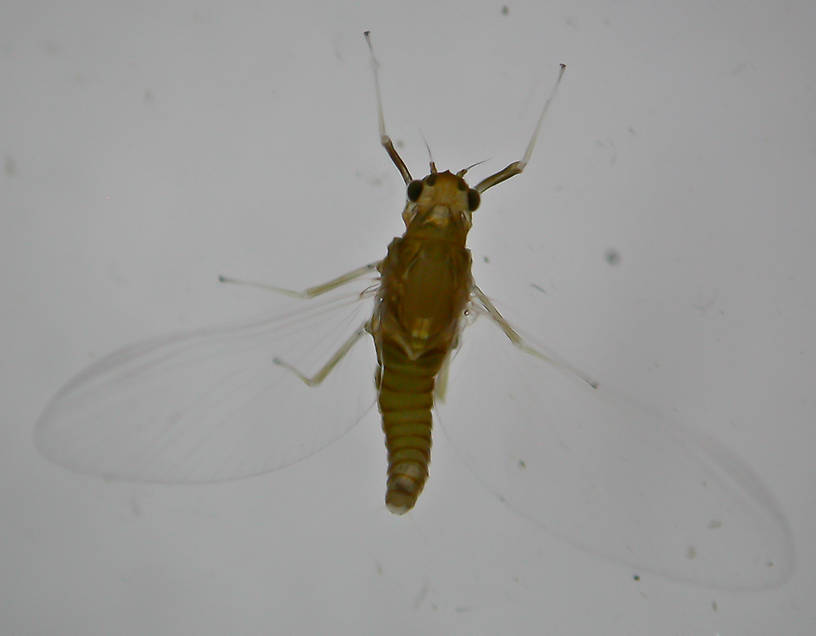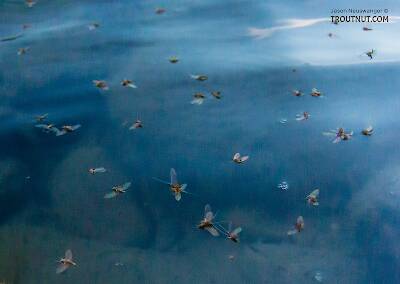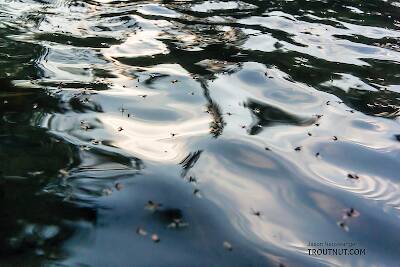
Salmonflies
Pteronarcys californica
The giant Salmonflies of the Western mountains are legendary for their proclivity to elicit consistent dry-fly action and ferocious strikes.
Featured on the forum
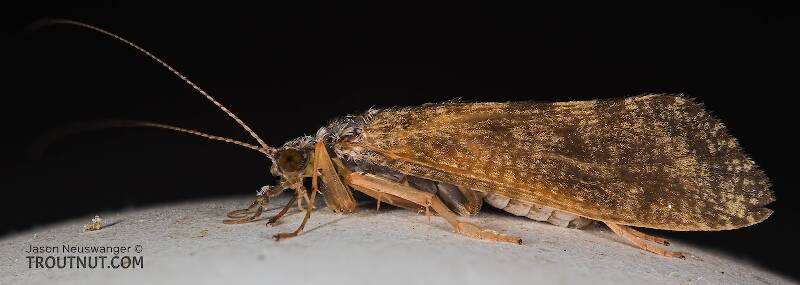

Troutnut is a project started in 2003 by salmonid ecologist Jason "Troutnut" Neuswanger to help anglers and
fly tyers unabashedly embrace the entomological side of the sport. Learn more about Troutnut or
support the project for an enhanced experience here.
Mayfly Genus Acentrella (Tiny Blue-Winged Olives)
The only Acentrella species commonly reported to be important to anglers is Acentrella turbida, though Acentrella insignificans is important in some western locales. See the species pages for distribution and timing details. This genus is one of two (including Heterocloeon) that can easily be distinguished from other Baetidae genera by the presence of a conical mesonotal projection. A. turbida lacks hindwings which is useful for distinguishing this species from all others in either genera. A. turbida was previously known by the names of its synonyms Pseudocloeon turbidum in the West and Pseudocloeon carolina in the East.
Genus Range
Hatching behavior
The nymphs are normally excellent swimmers, but they become much less mobile as they're emerging and dead-drift helplessly to the suface. Considering that they then emerge and fly away quickly, this makes the nymphs the prime stage to match during this emergence.Spinner behavior
Time of day: Dusk
Nymph biology
Current speed: Slow to Medium
Substrate: Rocks, logs, gravel, vegetation
Environmental tolerance: Widely tolerant, but best in cold rivers
Specimens of the Mayfly Genus Acentrella
1 Male Dun
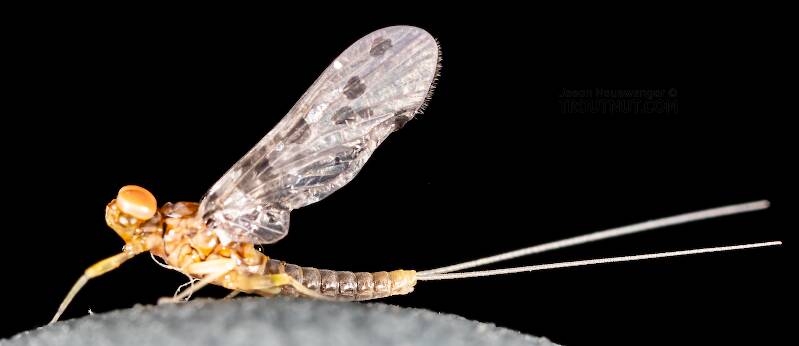
This specimen emerged indoors from nymphs I had collected, then partly molted into a spinner but got stuck along the way. I've included a couple pictures showing some of the spinner colors. It got a bit waterlogged after emerging, so the wings aren't in perfect shape, but it still represents one of two Baetids that were emerging and drawing trout to rise on the Yakima. Based on body size and shape, it is most likely the same species as this nymph.
1 Female Dun
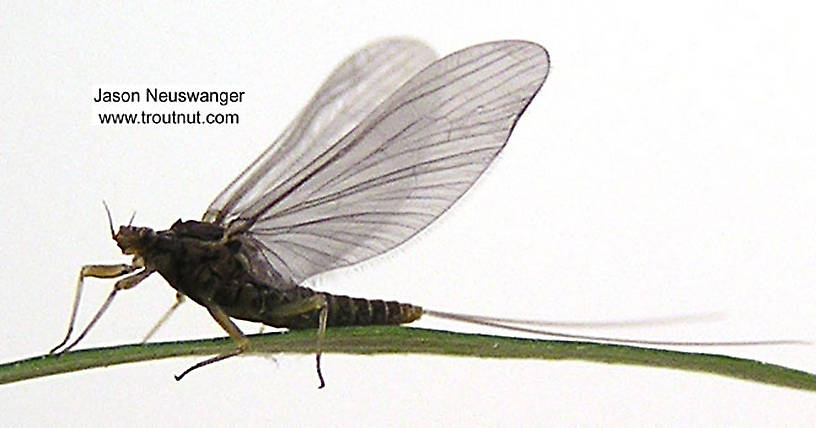
I've lost the date information for this specimen and taken a guess.
1 Male Spinner
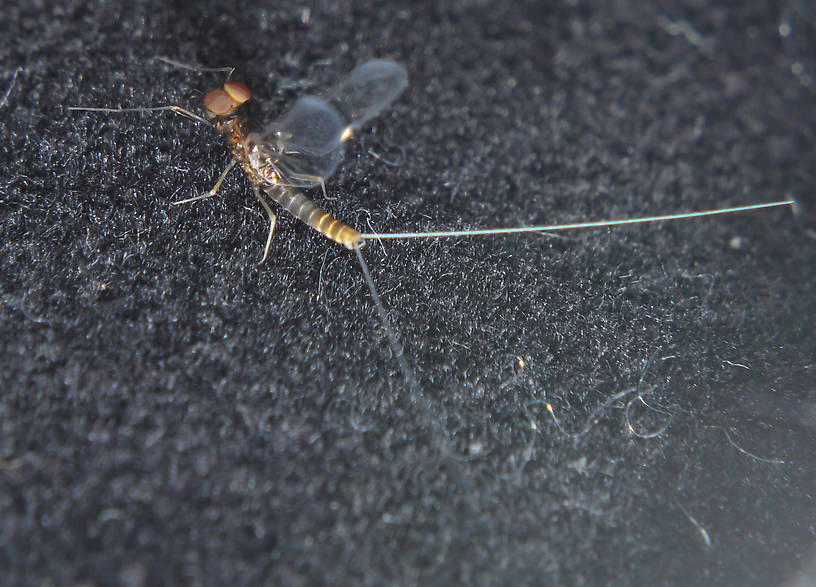
I would not like to have to match this hatch. These are the smallest mayflies I have ever seen. I used to think Caenis was the smallest adult mayfly in the west but these guys are about 4mm long. The male eyes are two toned, brown above and olive below. The abdomen is dark brown interspersed with light brown. The abdomen is clear for the anterior 2/3rd and the remainder is white. The tails are twice as long as the insect. There is only one pair of wings.
3 Female Spinners
1 Nymph
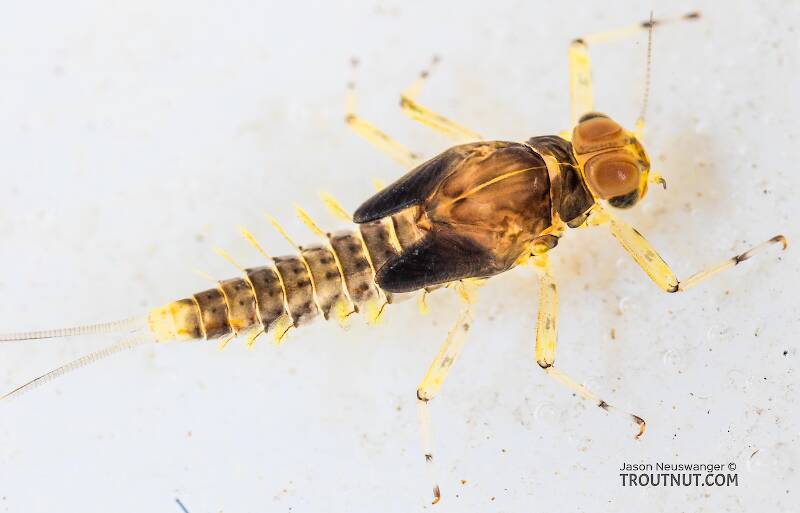
Another nymph probably of the same species as this one emerged and was photographed as a dun and partly-molted spinner.
2 Streamside Pictures of Acentrella Mayflies:
Discussions of Acentrella
acentrella nymph
20 replies
Posted by Goose on Nov 3, 2006
Last reply on Sep 3, 2011 by Oldredbarn
Hi Jason! Do you have a picture of the (acentrella-miniature BWO nymph) on the site? I've been fishing them and wanted a better idea of how they look.
Thanks,
Bruce
Thanks,
Bruce
Start a Discussion of Acentrella
References
- Fauceglia, Ted. 2005. Mayflies . Stackpole Books.
Mayfly Genus Acentrella (Tiny Blue-Winged Olives)
Taxonomy
Species in Acentrella
Acentrella insignificansTiny Blue-Winged Olives
2
21
Acentrella parvula
0
0
Acentrella turbidaTiny Blue-Winged Olives
4
21
5 species (Acentrella alachua, Acentrella barbarae, Acentrella feropagus, Acentrella lapponica, and Acentrella nadineae) aren't included.

